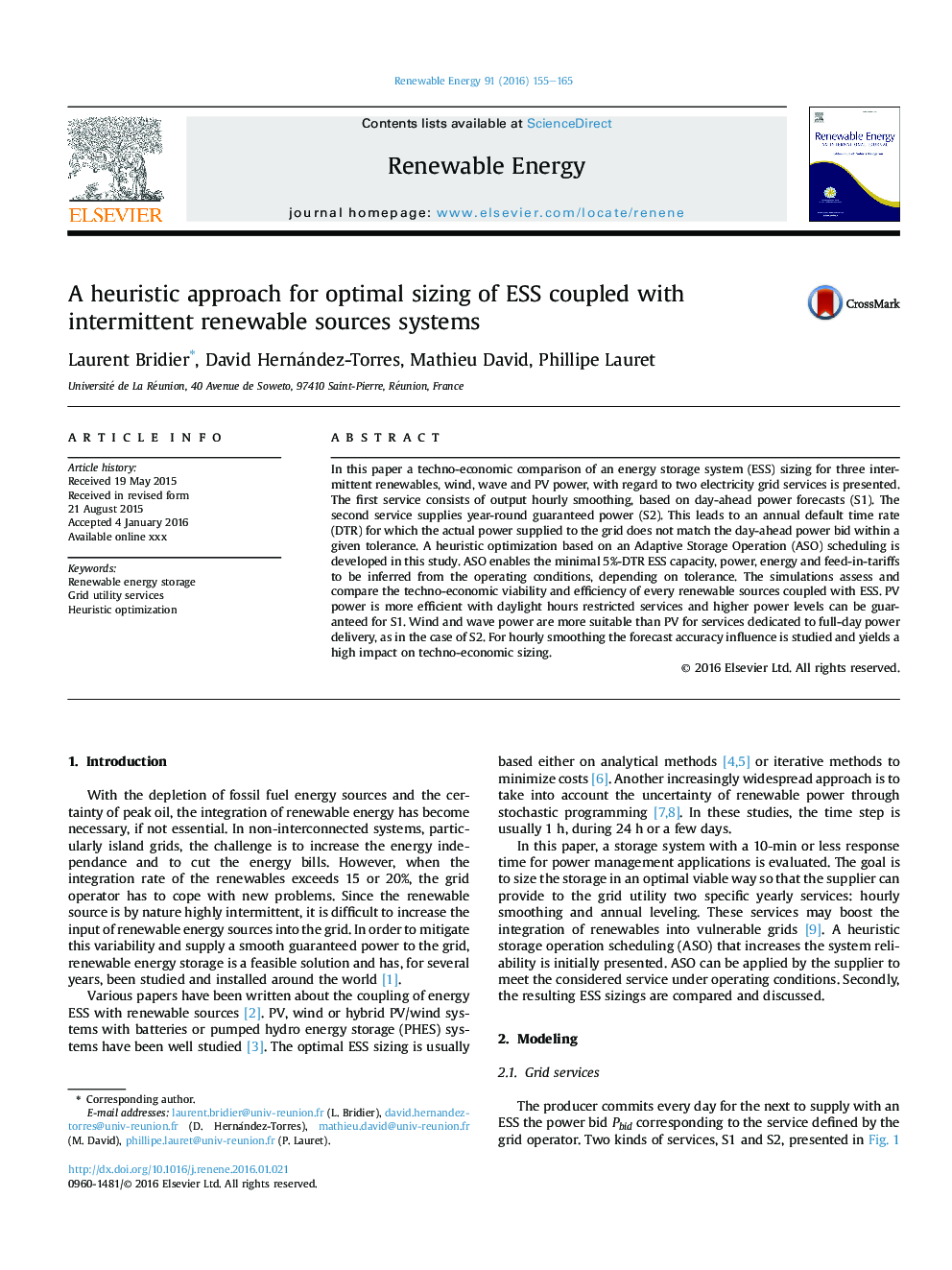| Article ID | Journal | Published Year | Pages | File Type |
|---|---|---|---|---|
| 6766068 | Renewable Energy | 2016 | 11 Pages |
Abstract
In this paper a techno-economic comparison of an energy storage system (ESS) sizing for three intermittent renewables, wind, wave and PV power, with regard to two electricity grid services is presented. The first service consists of output hourly smoothing, based on day-ahead power forecasts (S1). The second service supplies year-round guaranteed power (S2). This leads to an annual default time rate (DTR) for which the actual power supplied to the grid does not match the day-ahead power bid within a given tolerance. A heuristic optimization based on an Adaptive Storage Operation (ASO) scheduling is developed in this study. ASO enables the minimal 5%-DTR ESS capacity, power, energy and feed-in-tariffs to be inferred from the operating conditions, depending on tolerance. The simulations assess and compare the techno-economic viability and efficiency of every renewable sources coupled with ESS. PV power is more efficient with daylight hours restricted services and higher power levels can be guaranteed for S1. Wind and wave power are more suitable than PV for services dedicated to full-day power delivery, as in the case of S2. For hourly smoothing the forecast accuracy influence is studied and yields a high impact on techno-economic sizing.
Related Topics
Physical Sciences and Engineering
Energy
Renewable Energy, Sustainability and the Environment
Authors
Laurent Bridier, David Hernández-Torres, Mathieu David, Phillipe Lauret,
